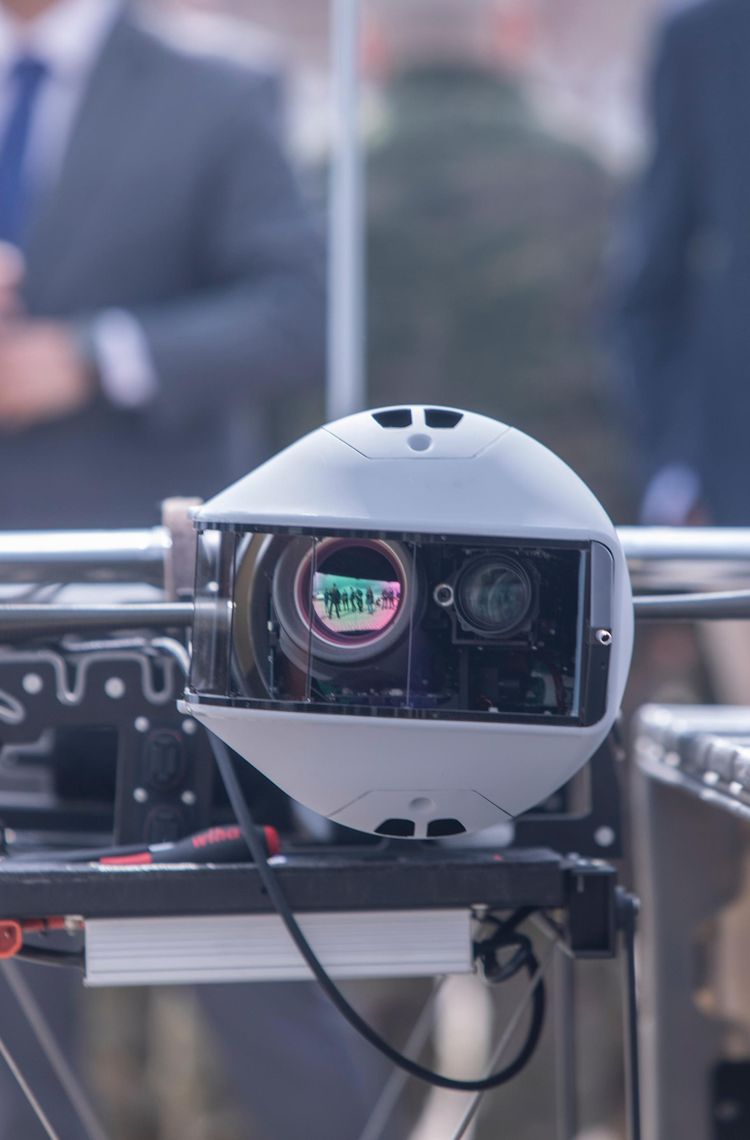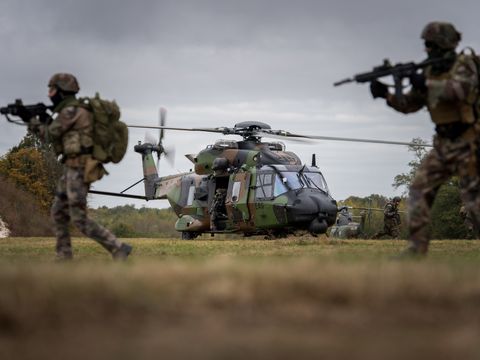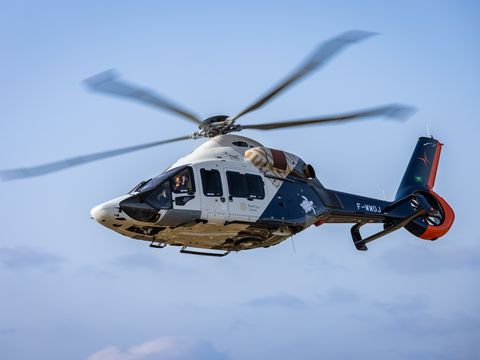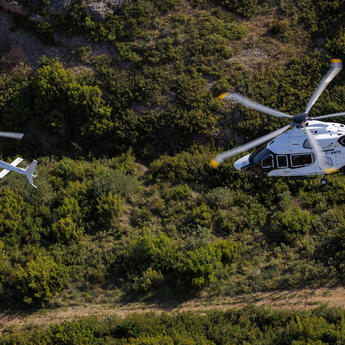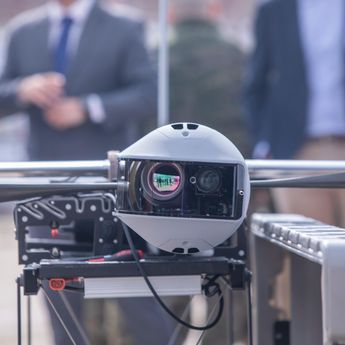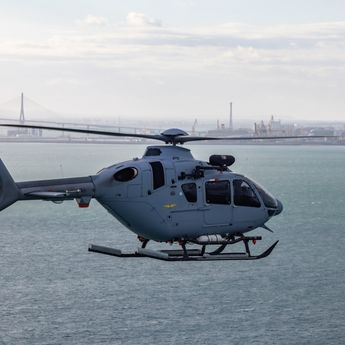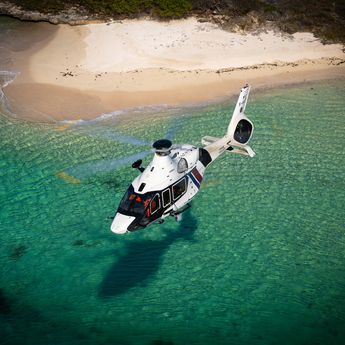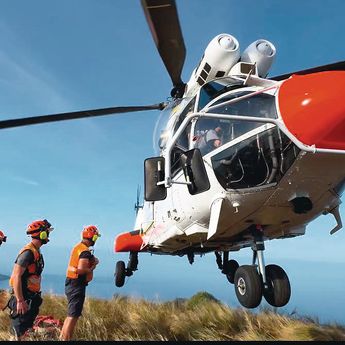Imagine crewed helicopters that obtain information from drones without having to put themselves at risk, or uncrewed drones that transport supplies to troops deployed across wide areas without endangering the helicopter. The reality is that crewed-uncrewed teaming is transforming aerial operations and Spain is ready to play a key role in this revolution.
Collaboration between crewed and uncrewed aircraft not only minimises risk for military personnel but also optimises data collection, surveillance and attack capabilities. The Spanish Armed Forces have shown a keen interest in learning how to exploit these new capabilities. As part of this, last May saw the first demonstration of crewed-uncrewed collaboration between a Flexrotor and a Spanish Navy H135 ‘Nival’ helicopter. For this test, Airbus Helicopters in Spain was responsible for the design and integration of the systems in the H135, such as the antennas and modem, in flights in which the crew of the H135 received information from the Flexrotor directly from the drone.
A true performance catalyst
The tests, carried out at the Coronel Maté Spanish Army airbase in Colmenar Viejo (Madrid), successfully demonstrated how a crewed helicopter can follow and receive information from a drone, extending visual range and mission safety exponentially. According to Luis Martín Díaz, Head of Customers and Programmes at Airbus Helicopters in Spain: “The association with the Flexrotor converts the helicopter into a force multiplier, enabling rapid collection and distribution of data in real time to allow informed decision-making, and also reduces the crew’s exposure to dangerous and no-go areas.”

Improving strike precision
Another project putting Spain on the map for crewed-uncrewed teaming has been the integration of intelligent loitering systems into the Spanish Army’s NH90 helicopter. Tests, carried out at the end of September in Chinchilla and set to continue over the coming months, have looked at the integration of the Spanish company Arquimea’s Q-SLAM-40 loitering system into the NH90.
The integration flights showed that this system, equipped with artificial intelligence, can be launched from the helicopter via the cargo hook hatch and controlled using a mission system integrated into an on-board tablet. This capability allows controlled, surgical strikes, minimising the risk of collateral damage. The Q-SLAM-40 has a flight endurance of 25 minutes and a range of 25 kilometres; its ability to form drone swarms opens up a new array of possibilities for the NH90’s classic attack missions but also for scenarios of emerging importance, such as coordinated strikes against other drones.
Joining forces
“The commitment of the Spanish Ministry of Defence to projects of this type is of fundamental importance,” explains Belén García Molano, Head of Engineering at Airbus Helicopters in Spain. “These advances are not only a response to the increasing demand for more sophisticated and efficient defence systems, but are also a reflection of the country’s investment in talent and technology.”
Collaboration between the public and private sectors, working together to develop a strong technological environment, is enabling Spain to keep up with military developments and to be a driving force for change. As García Molano explains: “The work on crewed-uncrewed teaming is a clear example of how the ability to innovate and to adapt dual-use technologies, applicable to both military and civil environments, is laying the foundations for a more secure, intelligent and effective defence. Ultimately, Spain is not only demonstrating the future of defence but is actually shaping it.”

